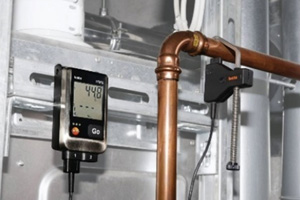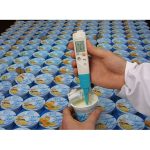
What is legionella?
Legionella are bacteria that occur naturally in our waters. From there, they can colonize supply systems and enter sanitary water systems or technical equipment via the water distribution network.
Legionella bacteria find ideal growth conditions at temperatures between 25 °C and 45 °C. Health-threatening concentrations occur in the range of 20 °C to 55 °C. It is therefore problematic if systems for water heating are operated at temperatures that are too low.
Longer standing time of water in pipes also promotes bacterial reproduction. In addition, conserving energy and water for environmental or cost reasons can encourage the spread of legionella.

Local statistics
According to the National Communicable Diseases Surveillance Report1 end of October 2022 there have been 652 legionellosis cases reported to the National Notifiable Diseases Surveillance System between 31 October 2021 – 30 October 2022. This was higher than the historical five-year mean.
Legionnaires’ disease2 is an uncommon, severe and sometimes life-threatening form of pneumonia, or lung inflammation, caused by legionella bacteria.
How can it be prevented?
Regular inspections, careful cleaning and maintenance of water systems like air conditioning units, cooling towers, pools, baths and showers can help prevent Legionnaires’ disease by reducing the risk that legionella bacteria will grow and be released to the environment.
However, it makes more sense to prevent colonization from the outset. One of the most effective prevention measures in this regard is to monitor or measure water temperatures at various locations.
Testo offers you various measuring instruments for this purpose – from simple thermometers to
digital temperature measuring instruments and data loggers. This allows you to precisely and reliably check the water temperature in hot and cold water systems.
Good to Know
… for legionella bacteria growth prevention
- The temperature in final storage tanks for water must not be below 60 °C.
- If hot water comes from a central storage tank via circulation, the temperature must not be below 55 °C even in the return flow.
- In cold water systems, the water temperature must be kept at < 20 °C.
- In systems for heating drinking water, the heating system must be able to raise the water temperature to 70 °C or more to ensure disinfection.

Reference links:
1 National Communicable Diseases Surveillance Report. (n.d.). Available at: https://www.health.gov.au/sites/default/files/2022-12/national-notifiable-diseases-surveillance-system-nndss-fortnightly-reports-17-to-30-october-2022_0.pdf [Accessed 19 Jul. 2023].
2 Australia, V. (2015). Legionellosis (Legionnaires’ disease). [online] Vic.gov.au. Available at: https://www.health.vic.gov.au/infectious-diseases/legionellosis-legionnaires-disease.









 Reduce cooking oil costs while ensuring quality
Reduce cooking oil costs while ensuring quality Expert knowledge on CO2 monitoring
Expert knowledge on CO2 monitoring Refrigeration knowledge - in 3 modules
Refrigeration knowledge - in 3 modules



